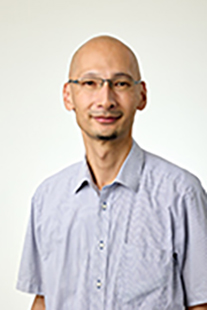Welcome Message from the Director of the Center for Obsidian and Lithic Studies
 Director, Prof. Dr. Ryuzo FUJIYAMA
Director, Prof. Dr. Ryuzo FUJIYAMA
I am Ryuzo Fujiyama, Director of the Center for Obsidian and Lithic Studies (COLS) at Meiji University. Since joining Meiji University’s Faculty of Letters as a full-time professor in 2011, I have been deeply engaged in researching the hunter-gatherer societies of the Paleolithic and Jomon periods in the Japanese archipelago. My primary focus is on understanding the diverse strategies these societies employed to adapt to various natural environments. More recently, my research has expanded to explore the emergence of ceramic technology within hunter-gatherer communities, adopting a multidisciplinary perspective.
Established in 2000, COLS is a one-of-a-kind research institute affiliated with Meiji University’s Organization for the Strategic Coordination of Research and Intellectual Properties. Since its inception, COLS has concentrated on obsidian as a crucial lithic resource in human history. Over time, our research has evolved into a broader interdisciplinary approach, now addressing the Human-Resource-Environment System, seamlessly integrating archaeology, geology, paleoenvironmental studies, and archaeological sciences within large-scale collaborative projects.
Located within the Ring of Fire, the Japanese archipelago boasts more than 100 obsidian sources, making it a significant region for obsidian research. This naturally occurring volcanic glass has served as a vital material for stone tools since modern humans first arrived in Japan approximately 38,000 years ago. Prehistoric hunter-gatherers ventured deep into mountainous terrains and across vast seas to procure this valuable resource, showcasing their remarkable mobility and resource acquisition strategies.
Our center is headquartered at Meiji University’s Surugadai Campus in Tokyo, complemented by a specialized research facility—the Nagawa Center, situated in the Central Highlands, a mountainous region literally located at the center of the Japanese archipelago. This area, particularly Wadatoge, Kirigamine, and Yatsugatake, harbors some of Japan’s most prominent obsidian sources, which have been extensively studied over the past five decades by researchers at Meiji University. This rich tradition of fieldwork and analysis culminated in the founding of our center, solidifying our position as a leading institution in lithic studies.
Today, COLS is comprised of approximately 20 researchers, including specially-appointed professors, faculty members, and visiting scholars. While initially focusing on obsidian resource studies, our research now spans the broader Human-Resource-Environment System, encompassing obsidian analysis, prehistoric archaeology, and archaeobotanical studies. By investigating the intricate relationships between humans and their natural surroundings, our work not only advances Japanese archaeology but also establishes COLS as a global hub for interdisciplinary obsidian research. Furthermore, we are deeply committed to mentoring and training the next generation of archaeologists, ensuring the continued advancement of lithic studies worldwide.
Through international collaboration and cutting-edge research, we strive to deepen our understanding of the origins and evolution of human societies, fostering meaningful academic exchange across disciplines and borders.
Thank you for your interest in our center. We look forward to collaborating with scholars and contributing to the advancement of archaeological sciences.


